Day 9:圖解變數作用域(Scope)
前幾天的文章談到各種等級的 Scope 效果。
懶人包支援:
在 JavaScript 裡,有 3 種等級的作用域: 1. 香港喜劇天王星爺——Function Level Scope 2. 國際巨星阿湯哥——Global Level Scope 3. 住在隔壁號稱歌神的里長阿伯——Block Level Scope (ES6)
不同情境下各種 Scope 如何作用,有時光靠文字描述仍略覺模糊。
尤其同樣在主程式宣告,使用 let 和 const 產生的變數是 Block Scope,使用 var 產生的變數是 Global Scope 這一段,相對不易理解。
俗話說一張圖勝過千言萬語,這篇文章的目標是將不同 Scope 的情境用圖解的方式說明,希望讓 Scope 一目瞭然。
圖解之旅行前說明
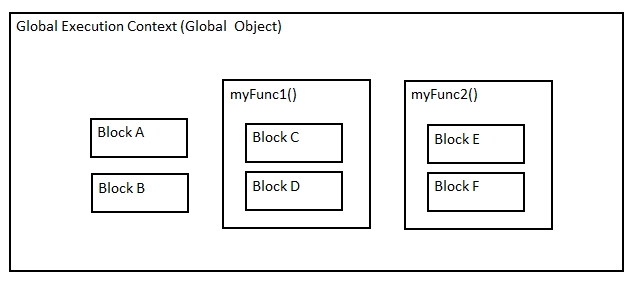
上面這張圖代表我們一般撰寫 JavaScript 程式的程式結構。
我們會在主程式區——正式一點的名稱為全域執行環境 (Global Execution Context) ——開始撰寫程式 (意即程式碼不在任何函數內)。
過程中會用到如 if-else 或 for loop,形成一個個 Block (如 Block A、Block B)。
漸漸地,我們會把一些程式片段包裝成函數,形成 Function 區塊 (如 myFunc1()、myFunc2()),而函數內又可能再形成小 Block。
對應到實際的程式碼,會類似以下:
以下會用實際的程式碼情境,配合程式結構圖片來說明各種 Scope 的有效範圍。
Example 1:宣告在 Function 內 (使用 var、let、const 都一樣)
var、let、const 都一樣)執行結果:
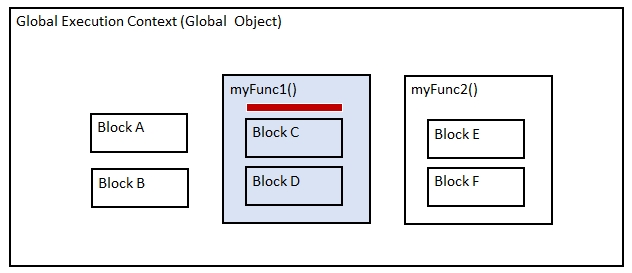
紅色是 n1 宣告的地方,淺藍色部分就是 n1 的 Scope。
基本 Function Scope。
只有在自己這個 function 內有效,包含 function 內的子 Block。
別的 function 不認得。
主程式區也不認得。
Example 2:宣告在主程式區 (使用 var)
var)執行結果:
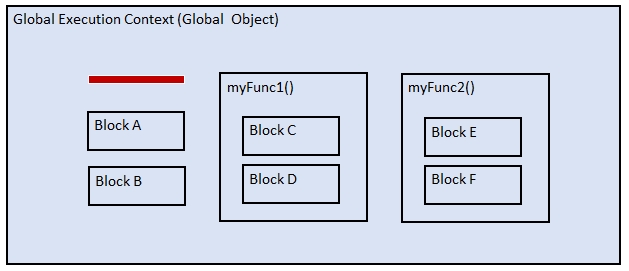
n1使用var宣告在主程式區,會存放在 Global Object 裡,屬於 Global 變數。主程式區內的所有子 Block 和函數都認得。
Example 3:宣告在主程式區 (使用 let 或 const)
let 或 const)執行結果:
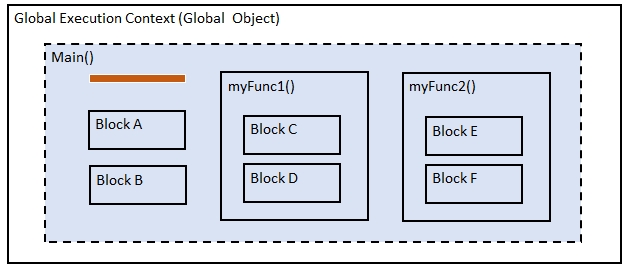
可和 Example 2 比較。
在執行時,主程式區會被 JavaScript 包裝成一個 Function 去執行 (圖中隱藏的
Main())。所以變數
n1不會成為 Global Scope,而是 Function Scope / Block Scope。
Example 4:賦值給未宣告的變數,所自動產生的全域變數
執行結果:
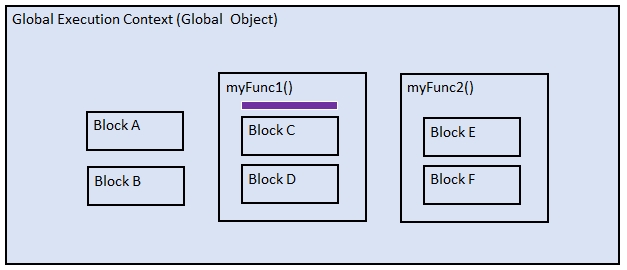
紫色代表
n1 = "OneJar",也就是沒有宣告就對n1賦值的地方。雖然賦值的地方是在 function 內,但因為沒有先宣告,JavaScript 的行為會自動將
n1產生為 Global 變數,所以變成 Global Scope。
Example 5:Global 和 Function 內同時存在同名變數 (使用 var、let、const 都一樣)
var、let、const 都一樣)執行結果:
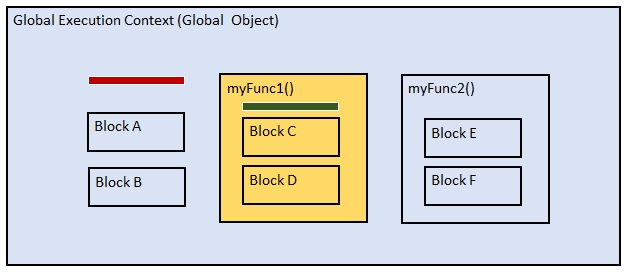
紅色是
var n1 = "Tom Cruise",宣告在主程式區,屬於 Global Scope。綠色是
var n1 = "Stephen Chow",宣告在主程式區,屬於 Function Scope。淺藍色區域,會生效的是紅色的
n1。黃色區域,會生效的是綠色的
n1。
Example 6:Block 內使用 var 宣告
var 宣告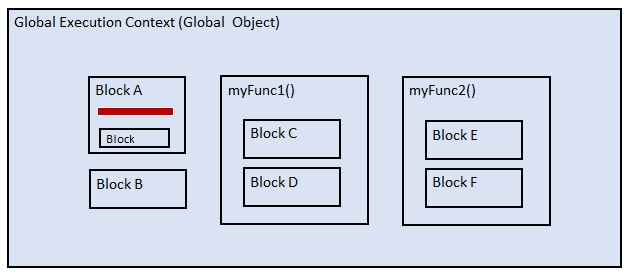
傳統
var不支援 Block Scope。若是宣告在主程式區的 Block,會是 Global Scope (如上圖所示)。
若是宣告在函數內的 Block 內 (例如
Block C內),會是 Function Scope。
Example 7:Block 內使用 let 或 const 宣告
let 或 const 宣告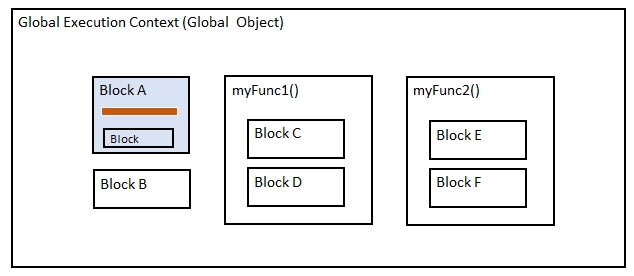
可和 Example 6 比較。
使用
let或const宣告變數,支援 Block Scope 效果。變數
x只會在被宣告的那個 Block 和其子 Block 被認得。
總結
作用域 (Scope) 在程式設計裡是滿重要的一個概念。
不同程式語言隨著不同特性,可能有不同的 Scope 類型。
例如 Java 是物件導向語言,在物件的成員變數和函式前面會加上 public 或 private 等修飾子來宣告作用域,和 JavaScript 的作用域又是不同的運作原理。
不管是使用哪一種語言開發,都應該注意該語言的作用域運作原理。
References
Last updated
Was this helpful?